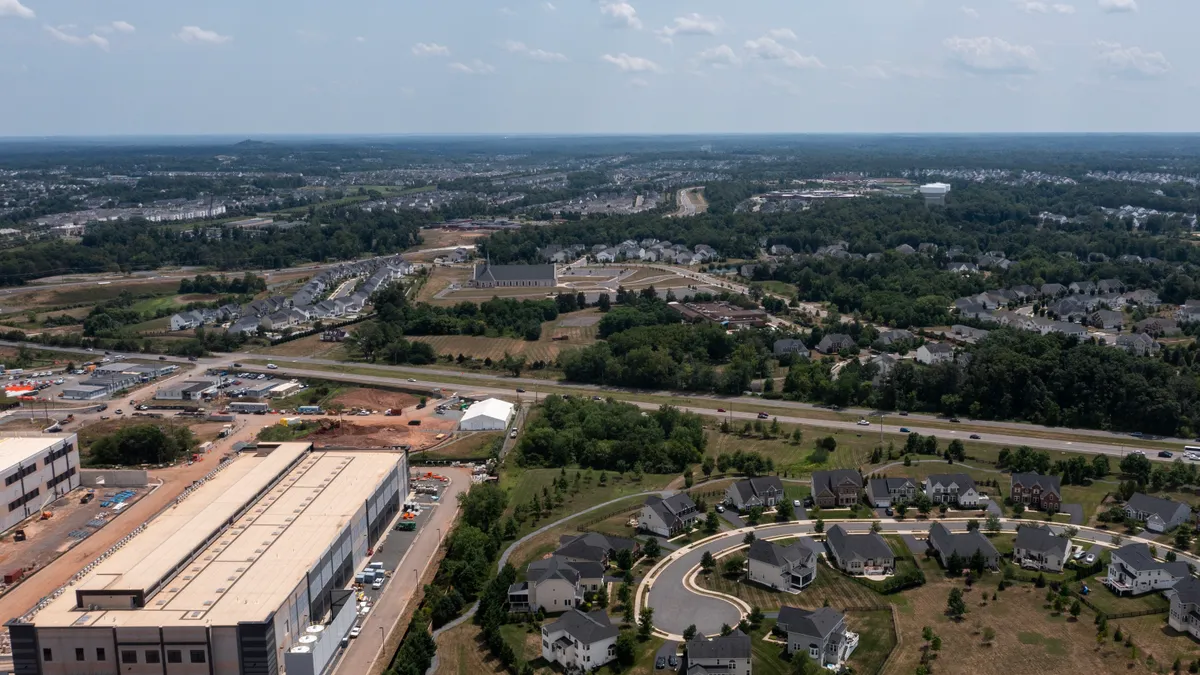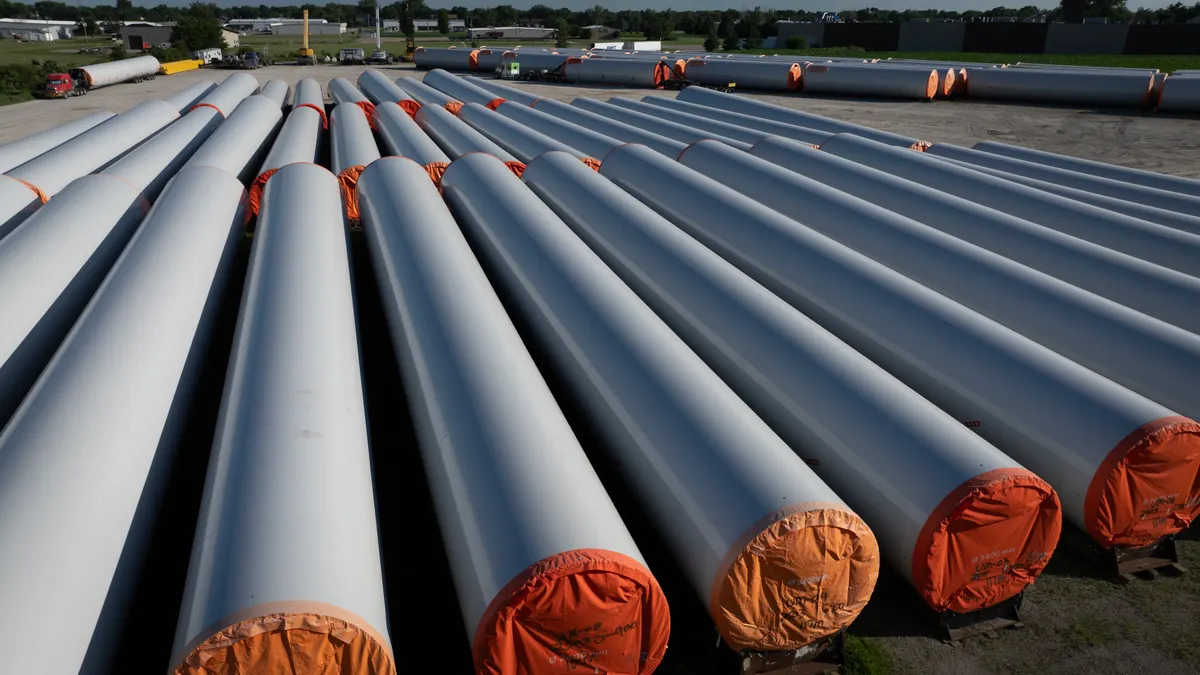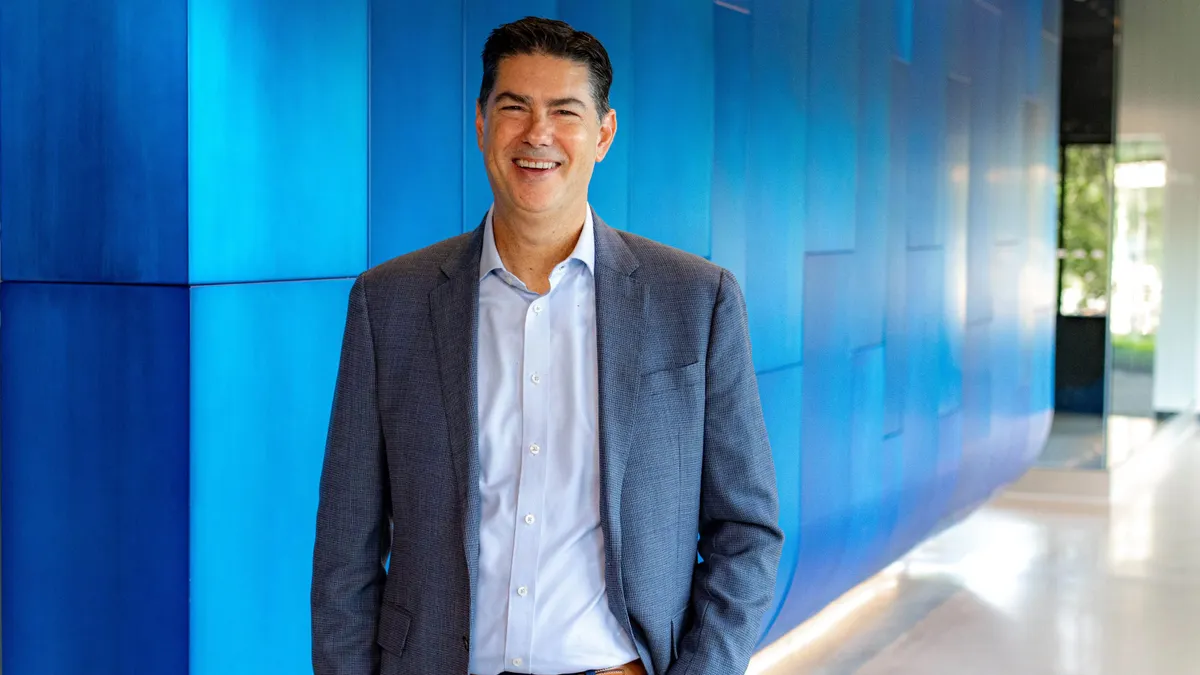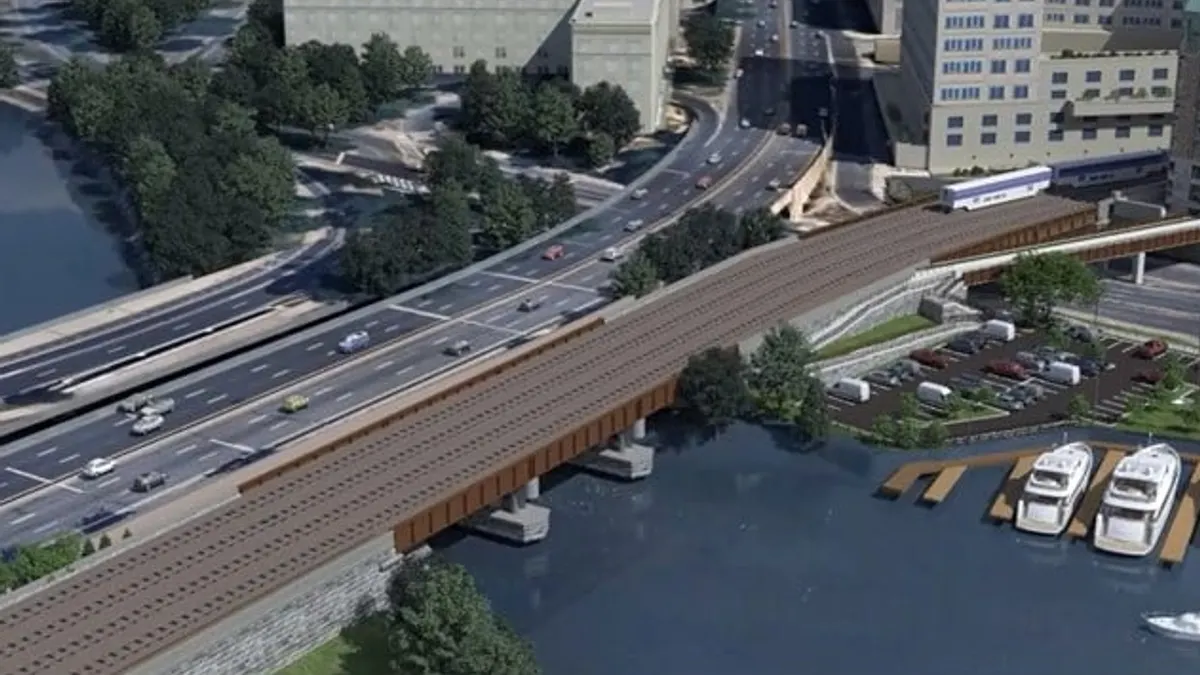Building certain components of a construction project somewhere other than the job site can help solve more than a few problems contractors face today.
The process often allows different phases of the project to run parallel with each other, shaving valuable time off the schedule. Gaston Electrical principal Bill Weber told Construction Dive in June that the company collaborates with mechanical and plumbing companies whenever it can to prefabricate 20- to 30-foot, corridor-length panels, or MEP racks, that are pre-fitted with ductwork, piping and raceways in a warehouse setting.
After they're installed on the job, the panels allow MEP contractors to make their final connections on site with greater ease and with up to 50% less labor. That benefit, alone, can be a boon to companies given the industry's well-documented shortage of qualified workers.
Building offsite can also be a safer alternative to site-built construction. With most of the work being performed at ground level in a controlled factory setting, the chance that a worker will fall is greatly reduced. Falls are the leading cause of accidental deaths on construction sites and top the list of the Occupational Safety and Health Administration's most commonly cited standards violations.
The quality of a project can also increase when a building component is prefabricated. Because the method works off of a production model, workers tasked with building one aspect of the end-product become more skilled at their assigned task over time and many iterations of performing the same task.
But after the products have been built or assembled, the next step — transportation of the product — leaves one big question: How do offsite manufacturers move their products without damaging the product or harming people and property along the way?
The fact that construction can take place in an enclosed space protects workers and products from bad weather, said Troy Tiddens, vice president of operations at modular manufacturer Guerdon Enterprises. While the company's goods — room-sized modules constructed to be a part of multifamily projects or hotels — are awaiting transport, they're waterproofed and shrink-wrapped before being stored in a secure lot.
When it comes to transporting modular units or any other large prefabricated component, however, the process is significantly more complicated than simply loading them on a truck and taking off for the job site.
Transport, begins with detailed planning well before delivery time, according to Jeff Marchant, field manager with Sacramento, CA-based precast manufacturer and installer Clark Pacific. Since Clark Pacific delivers primarily in California, a company engineer develops that plan in accordance with California Department of Transportation (Caltrans) guidelines for transportation permits for oversize or overweight vehicles, as well as with the transportation contractor hired to make the delivery.
The wider or taller the load, the more complicated that process gets.
Caltrans and other state departments of transportation, Tiddens said, could require special routing to avoid traffic congestion or travel under overpasses without enough clearance, as well as pilot cars to travel along with the delivery truck. The transport of extremely large loads in California, Marchant said, might even require an escort provided by the California Highway Patrol.
After the travel logistics have been worked out, the load is then turned over to professional trucking companies that have expertise in this type of transport. Once the product is on board, the driver is responsible for the tie-downs that will keep the load secure on the way to the site.
Sometimes offsite manufacturers are able to transport loads in standard-size vehicles or trucks. Gaston Electrical manufactures product full-time in its shop before making its own deliveries to the construction site, said D.J. Murray, the contractor's prefabrication manager.
That process, however, is also a meticulous one. "While many components can be transported via bins [stacked into a delivery vehicle]," Murray said, "some larger assemblies require careful packing and unloading, along with clear instructions for proper placement and positioning once they arrive at the job site."
Since Gaston manufactures and transports components for its own use on the project, the company carries the liability for making sure its products do not damage third parties on the road, while being offloaded from their vehicles and during installation.
For companies that only manufacture and deliver to a customer, that liability looks a little different, according to Jake Morin, niche president of construction at ProSight Specialty Insurance.
Typically, he said, the transportation company assumes liability for the safe transport of the product from the moment it is loaded onto the delivery vehicle to the time it is unloaded at the project site. Once that product reaches the assembly process, it then becomes the general contractor or end customer's responsibility. For companies, like Clark Pacific, that install their own products, those companies would give up liability during transport and assume it once again upon delivery, Marchant said.
But the issue of liability becomes a little murkier on the job, according to Morin.
The definition of project, in most general liability insurance policies, does not include adjacent common areas like alleyways, sidewalks or existing parking lots, Morin said. Some smaller specialty subcontractors, he said, like fire sprinkler companies, might use those spaces during the field fabrication of some of their products like piping. If so, any damage they may do to property, people or the product itself would not be covered, even if a potential incident occurred only steps away from the project.
According to Morin, contractors in those situations can add coverage for the work they do off site, though they should also consider a practice policy that covers them in the course of their work — not just while working on a particular job.
Roy Griffith, director of corporate development at Clark Pacific, said the key to getting any sizeable prefabricated component from Point A to Boint B is planning. That means early collaboration between designers and the manufacturer.
"We have to think about the size of those pieces," he said. "Can we get it from [our] facility to San Francisco? Can it make it under overpasses into the city? There are things we have to think about at the beginning of a project. That's when we have the most flexibility."





















